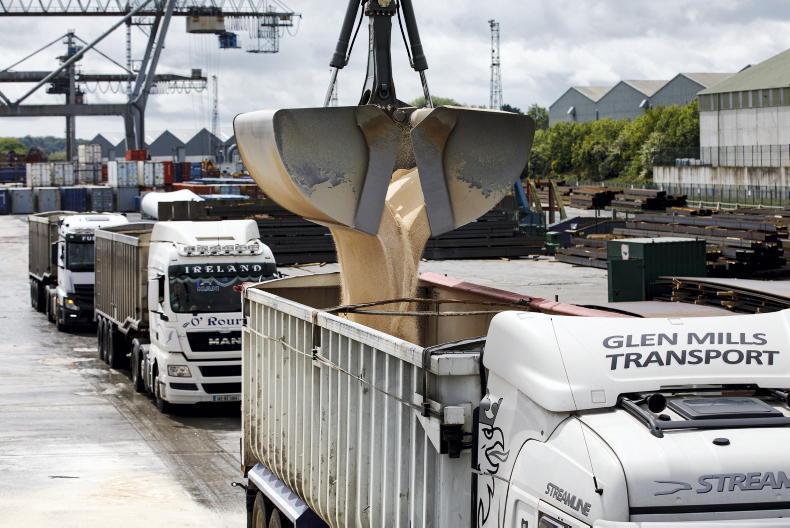The 42,000 tonnes of Russian-made fertiliser which landed in Waterford this week may just be the start of shipments, as New Ross-based Nitrofert takes advantage of the 1.58m tonne EU quota for the product.
“The product is available, legal and competitively priced,” said company managing director Eamonn Galavan. “All EU27 farmers are entitled to the option of using this and there is no reason for Irish farmers to be deprived.”
He added that he will bring in more shipments after he sells this week’s delivery.
Galavan urged the other main importers to take advantage of the quota, saying that he’s concerned the Russian leader may soon put an end to the trade.
“Putin is already trying to freeze Europe. His next move may be to try to starve us.”
Supply deal
Managing director of Grassland Agro Liam Woulfe, said that his company, one of Ireland’s largest fertiliser importers, would be very keen to import Russian product, but that they “have not yet come across a situation where they are happy a supply deal would be fully compliant with EU sanctions”.
The Irish Farmers Journal understands that the Department of Agriculture received a number of concerns from competitors to Nitrofert regarding the importation of the Russian fertiliser.
The legal obligation is on the importer of the fertiliser to ensure compliance with sanctions.
For farmers, the price of fertiliser has become a major headache this year with costs soaring alongside energy prices.
While the relationship between energy and fertiliser is long established (Figure 1), the effect has been particularly acute this year.
Gas contracts skyrocketed in the wake of the Russian invasion of Ukraine, with prices getting high enough to effectively shut down European production. The price of gas has dropped considerably in recent weeks.
Sanctions
However, this does not mean we will see a return of fertiliser prices to pre-invasion levels in the immediate term.
EU sanctions introduced in the wake of the Russian invasion add another layer of complexity to market rebalancing.
Further, as my colleague Anne Finnegan reports this week, trade restrictions outside Russia – where countries hold on to domestic supply in order to shelter their own farmers from international prices – have led to lower than usual globally tradable stocks.
With this in mind, 42,000t of fertiliser landing in Ireland this week has to be good news for farmers.
At first blush, it might seem like a drop in the ocean for the Irish market, which saw 1.7m tonnes of sales in 2021.
However, the promised further shipments have the chance to start moving the dial on prices, should they materialise without falling foul of EU quotas or other restrictions.
Looking at the longer term, very high prices this year have certainly curtailed farmer applications of fertiliser, with data from Teagasc showing that soil fertility is already coming under pressure.
It is obvious then that the sooner prices drop, the better it will be for food production in the coming years. With farmers in the closed period for spreading, there is probably a strong temptation to hold out as long as possible before making any purchases in the hope that prices drop.
However, there remains a lot of uncertainty in the outlook.
The imports from Russia will help, but the total tonnage landed will need to far exceed this week’s arrivals.
The recent plunge in gas prices should also help, should it become sustained into the winter, allowing European production to ramp up.
As has been the case throughout this most chaotic year for global commodities, farmers are stuck in a position where every decision on purchases has become extremely high risk.
Buy now for fear of higher prices later, or hold off for fear of lower prices later.
The only thing that is completely certain is that this volatility is utterly unsustainable.






 This is a subscriber-only article
This is a subscriber-only article










SHARING OPTIONS: